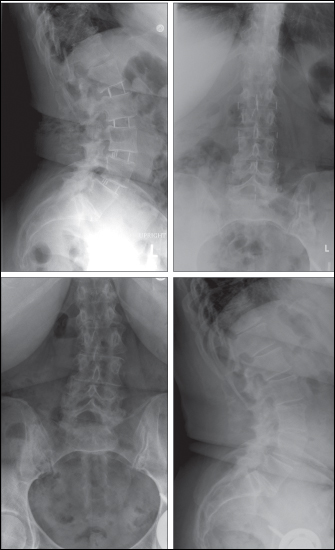Study finds XLIF less invasive, with fewer complications for adult scoliosis patients
The XLIF procedure to treat adult degenerative scoliosis produced outcomes similar to those for traditional methods of treatment with fewer risks.
Extreme lateral interbody fusion, in which one or two small incisions are made in the side of the body to access the disc space and perform fusion, was found to be less invasive and just as effective as traditional treatments for adult degenerative scoliosis.
According to Frank M. Phillips, MD, and colleagues their recent study of the extreme lateral interbody fusion (XLIF) in degenerative scoliosis cases demonstrated favorable clinical and radiographic results with the procedure.
“Our study results suggest that choice of fixation after XLIF significantly affects the Cobb correction and complication rate and show bilateral pedicle screws offered the greatest correction but a higher complication profile,” Phillips told Spine Surgery Today.
Minimally invasive procedure
Phillips and colleagues analyzed results in 107 patients with degenerative scoliosis who were treated with the XLIF procedure, all of whom underwent the procedure at one or more intervertebral levels with or without supplemental posterior fixation. They analyzed the patients’ results at the 24-month follow-up. The XLIF procedure involves the surgeon making one or two small incisions in the side of the body to access the disc space through the retroperitoneal space. The surgeon then accesses the disc by splitting the psoas muscle instead of cutting or retracting it, which limits the amount of blood loss during the surgery and postoperative pain, the investigators noted.

Frank M. Phillips
“For these scoliotic deformities, traditional surgeries would often involve a combined open anterior interbody fusion with posterior instrumented fusion. These procedures have been reported to have a high morbidity and complication profile. The traditional open anterior approach involves retracting the psoas muscle and mobilizing blood vessels, with the assistance of a vascular surgeon,” Phillips said. “The XLIF allowed us to do the anterior fusion that traditionally was a large open surgery through small incsions, minimizing damage to structures around the spine. With XLIF, using small incisions and dilating through the psoas muscle with neural surveillance one is able to access the disc space. You are not doing a large dissection or retracting blood vessels with risk of blood vessel injury,” he said.
An XLIF procedure typically takes about 30 minutes to 45 minutes per level, Phillips said.
The average age of the patients studied was 68 years and 73% of them were women. Standalone XLIF was performed in 18% of patients, while 76% of patients underwent XLIF with supplemental posterior fixation. Of the patients who received supplemental, unilateral pedicle screws were used in 35% of cases and bilateral pedicle screws were used in 65% of patients.
Phillips and colleagues reported significant improvement at 24 postoperative months for the Oswestry Disability Index score, VAS for back pain and leg pain, and the SF-36 survey.
The overall complication rate in the study was 24%; 12% of the complications were considered to be major, according to the study, in which Phillips and colleagues noted complication rates associated with traditional treatment of degenerative scoliosis have been reported to be as high as 66%.

Figure 1. Preoperative and postoperative radiographs show a 73-year-old patient with low back pain and neurogenic claudication. The patient had radiographic evidence of degenerative scoliotic deformity and disc space collapse and underwent XLIF at L1-5 in less than 2 hours with less than 30 mL blood loss.
Source:Phillips FM
Future of XLIF
XLIF is now being used to treat an increasing number of spinal pathologies and an expanded patient population, Phillips said.
“XLIF for this patient population has become more widely accepted. This study validates the technique and provides evidence that patients are doing quite well after the procedure. When we first introduced XLIF for the treatment of degenerative scoliosis, skeptics argued it does not achieve ideal surgical results and I think this study would obviously refute that,” Phillips told Spine Surgery Today. “Going forward, as we get more comfortable with minimally invasive approaches, we are expanding the field and treating patients with much more significant spinal deformity,” he said.
Phillips said the cost of an XLIF procedure was not a part of the study.
“In general, hospital length of stay, complications and infections are major drivers of cost related to spinal surgery. Given the reduction in these in our study, one would anticipate the early costs being lower in the XLIF/MIS patients,” Phillips told Spine Surgery Today. – by Robert Linnehan
Reference:
For more information:
Disclosure:Phillips is a consultant to and receives royalties from Nuvasive, but none of the royalties are for XLIF products.
